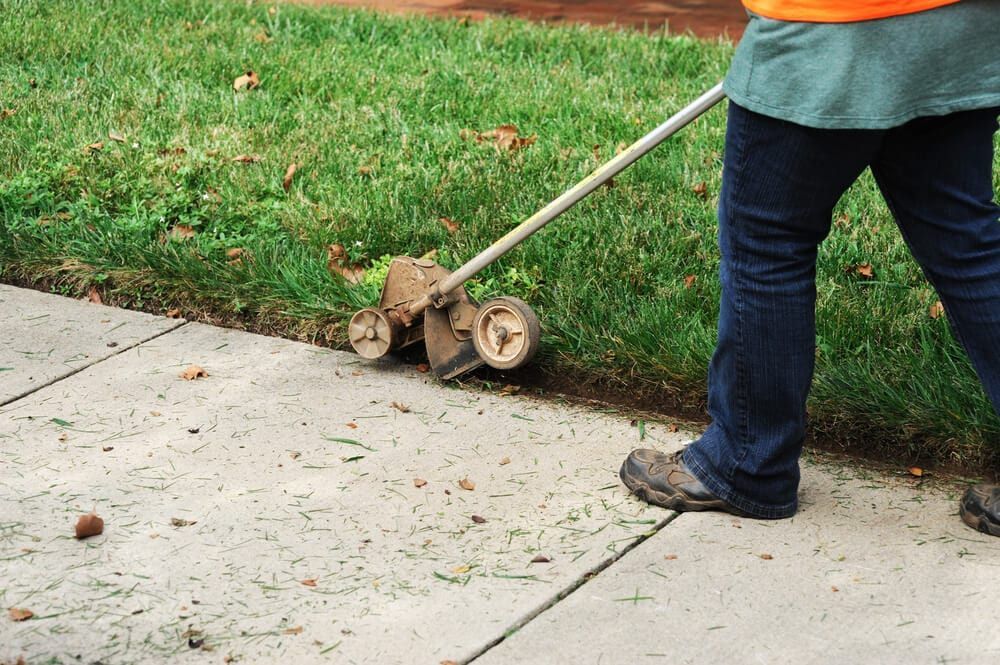There is nothing quite like an eye-catching, well-groomed lawn to make a property stand out among the crowd. The height, color, and health of your lawn all distinguish your lawn from the rest. While you may not think edging is an essential part of maintaining your lawn, it can be the difference between a good lawn and a great one.
Edging your lawn not only adds a distinguished look, but it also has many other benefits, including cleaner mowing lines and weed-free borders. You’ll be amazed at how edging
accentuates your lawn.
Read on to learn all the reasons why you should edge your perimeter in order to achieve your ideal well-manicured lawn.
Edging: An In-Depth Guide
Edging is the process of using a special trimmer, referred to as an edger, to produce smooth, consistent lawn borders and lines. Unlike regular trimmers, edgers cut your grass with a blade at a vertical angle to create a neat and tidy appearance. If you want to prevent your grass from growing outside the confines of your lawn’s edge, it’s time to define your borders with this technique.
Not only does edging create a distinct barrier around your concrete, but it benefits flowerbeds as well. That’s because this process provides a root barrier to block out invasive grasses from your lawn from entering into your flowerbeds.
What Tools Should You Use to Edge
There are two primary edging techniques that you can choose from: mechanical and manual.
Consider the differences between the two approaches below:
Depending on what type of edging device you use, you might need some extra steps. For example, manual edgers require you to dig a trench along your lawn’s border manually. On the other hand, a gas or electric-powered edger makes a perimeter with ease.
Edgers Vs. Trimmers
If you’ve previously used trimmers to clean up your lawn, you may be wondering why you also need to edge your lawn. Trimmers use a nylon string to cut the grass horizontally and are used in conjunction with mowers to even hard-to-reach or overgrown areas of your yard. If you attempt to edge with a trimmer, you won’t get a clean line and will end up with a mess.
Instead, stick to using an edging method to create the ideal depth and distinction between grass and concrete and flowerbeds. Then, you can use it to cut overgrown grass by running it in a straight line around the rim of your lawn.
Edgers also save you trimming time because they have blocked the overgrowth of weeds along your perimeter. That’s why it’s a great idea to use edging techniques in conjunction with mowing and trimming for the ideal lawn your neighbors won’t stop talking about!
Benefits of Edging Your Lawn
Achieving the desirable lawn of your dreams has never been easier than with edging techniques. Not only is the process relatively simple, but it also offers additional benefits, such as:
From boosting curb appeal to weed prevention, edging will create a lawn design to fill you with pride.
Now, if it’s your first time edging your property, it’s best to enlist professional landscaping specialists. They can tackle significant overgrowth in hardly any at all, and they’ll even leave you with an edging maintenance guide to keep your lawn looking great all summer long.
How the Edging Process Works
Cultivating a beautiful lawn is relatively easy, thanks to the edging process. If you’re looking to adding an edging technique to your yearly lawn maintenance plan, follow the steps below:
Keep your lawn looking great every season by incorporating edging into your lawn care plan. Additionally, please remember to always make sure you are wearing protective eyewear to avoid eye injuries from debris created during the process.
How Often Should You Edge Your Lawn?
Every time you mow your lawn, you should examine your lawn’s border to see if the grass grows over your edge line. During late spring to early summer, your yard goes through a growth spurt thanks to the lush rains. Since it’s growing so often, you’ll need to mow, trim, and edge even more during this time to ensure that your lawn only grows within its boundaries.
Continually assess the integrity of your edge lines, especially after you mow, to see if you need to sculpt your borders a bit. Additionally, if you plan on fertilizing your lawn, you should be prepared to edge at least every second or third mow due to its growth spurt.
While you can edge your lawn multiple times a year, you don’t necessarily need to. Instead, try to aim for an edge treatment at least once or twice a year to keep weeds at bay and maintain a good perimeter. If you choose to edge only once a year, plan on doing it around late June and stick to the same yearly schedule for optimal results.
Craft Your Perfect Lawn With KG Landscape
Say goodbye to haggard-looking overgrowth, and say hello to a beautiful, well-kept lawn thanks to edging techniques. You will achieve added curb appeal while also creating a line of defense against invasive weeds. One of the best benefits of edging is that it’s only required once or twice a year for desirable effects. Then again, do it more for an eye-catching lawn that fills you with pride.
At KG Landscape, we understand the desire to maintain your beautiful lawn, which is why we offer a plethora of landscaping services to keep your property looking good all year long.











